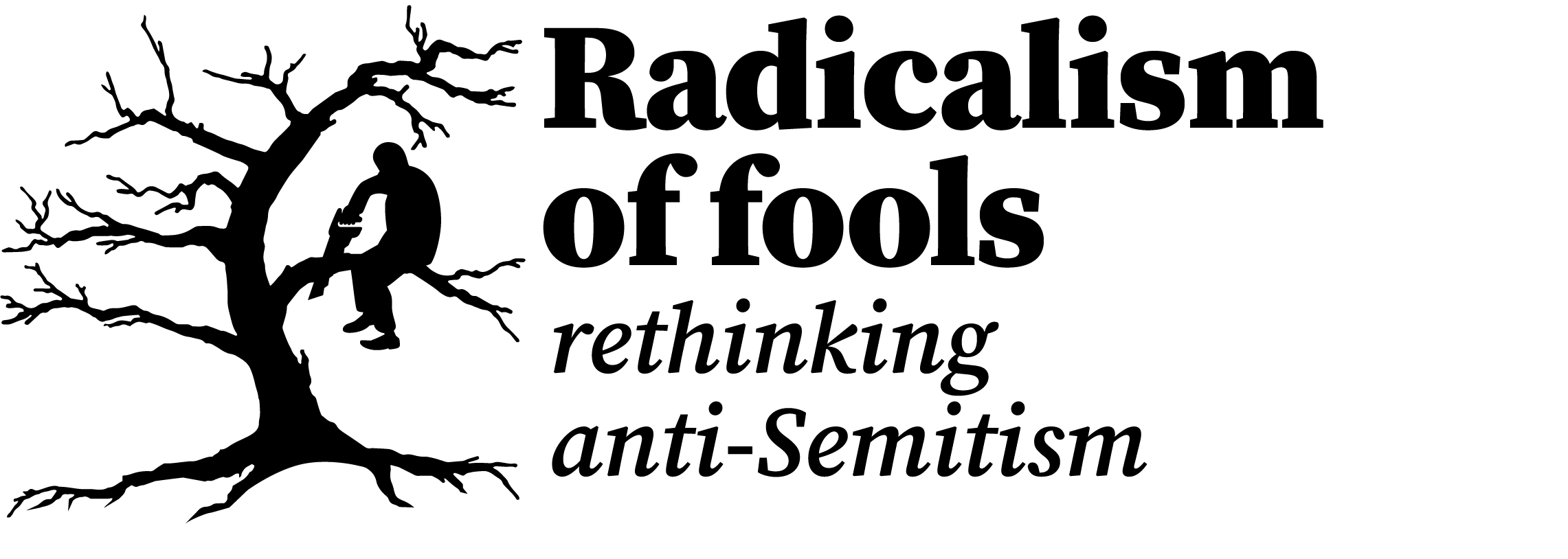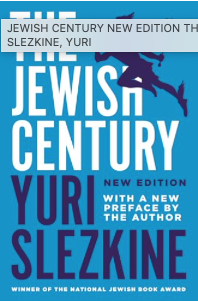This article looks at the link often made between Jews and modernity. The connection is made both by those who identify with the modern world and those who loathe it. The piece follows earlier articles on Jews and capitalism and Jews as a 'race'.
The Jewish Century is an insightful if highly unusual study of how Jews came to represent the modern world. It is really two inter-related books in one. First and foremost it is a study of how Jews became associated with modernity. Although they were not its creators they were particularly well adapted to thriving in modern conditions. But this success in turn created the circumstances in which an anti-Semitic counter-reaction could have devastating consequences.
The book also tells the closely related story of Jews in the geographical area which morphed from the Russian empire to the Soviet Union. This is far from incidental as for almost 200 years the area was the centre of Jewish life. At the turn of the 20th century 5.2m out of about 8.7m of Europe’s Jews lived in the region. Yuri Slezkine, a professor of history at the University of California, Berkeley, has an edge in relating this story as he was raised in the Soviet Union.
To understand his argument it is first necessary to grasp his terminology. Jews, for Slezkine, are most of the time quintessential Mercurians. In medieval and early modern societies this meant they specialised in crafts, finance and providing commercial services to others. The majority population, who he calls Apollonians, were focused on food production.
Jews were far from the only group of what he calls service nomads which provided services to the majority. For example, Slezkine points to gypsies and travellers who specialised in tin smithing, knife sharpening, chimney sweeping and other services. He also points to groups in other places, such as the Parsis in the Indian sub-continent, which played a similar role to Jews in Europe.
Jews, like other service nomads, had particular characteristics not generally shared with the Apollonian population. They did not herd animals, till the soil or live by the sword. Jews also had their own languages – predominantly Yiddish in Europe – lived relatively separately from the Apollonian population and had a complex system of food taboos (kashrut). Within the Russian empire they were mostly legally restricted to the area known as the Pale of Settlement until the end of the First World War.
Although Jews were far from alone as Mercurians they were the largest such minority in Europe. They therefore came to be seen as the quintessential group of this type.
Towards the end of the nineteenth century a shift occurred which was to have a profound impact on the Jews and the world more generally. The relatively late emergence of capitalism in eastern Europe started to uproot Jews from their traditional role. Increasingly they became more integrated into the modern world both in Russia but also, through migration, more generally.
This shift happened while the world as a whole was becoming more Mercurian. Qualities that were often associated with the Jews, such as dealing in concepts, financial activity, literacy and mobility were becoming more important. At the same time the proportion of the general population involved in food production steadily diminished. In that sense the twentieth century was becoming more Jewish in character. Jews, with their traditional Mercurian qualities, were particularly well adapted to this new world.
Three great migrations pushed Jews to become centrally involved in this modern world. One wave went to America where they were generally highly successful in business and the professions. Another went to Palestine, under the Ottoman empire and then the British mandate, where in 1948 the state of Israel was founded.
The forgotten migration wave – although arguably the most important at the time – was from the Pale of Settlement to the large Russian and Ukrainian cities. Here too Jews did particularly well. Jews played a disproportionate role in the Russian revolution and subsequently as part of the political elite. However, it is important to remember in this context that most Jews were not revolutionaries and most revolutionaries were not Jews.
Then during Stalin’s Great Terror of 1937-8 Jews suffered disproportionately. At that point the Soviet dictator was purging the elite of elements he considered hostile. Jews were not targeted as an ethnic group but nevertheless they were hit hard as they were over-represented in the elite.
Slezkine argues that the campaign to cleanse the Soviet elite of ethnic Jews specifically began in May 1939. That was apparently motivated by Stalin’s attempt to appease Hitler in the run-up to the Nazi-Soviet pact later that year. Of course millions of Jews in the area were slaughtered in the Holocaust when the Nazis eventually invaded.
Soviet anti-Semitism itself had a particular character which marked it out from the situation further West. To understand its character it is necessary to appreciate, at least in outline, the unique characteristics of the Soviet Union. Slezkine describes it as: “a large section of the world that consisted of numerous territorially rooted nationalities endowed with autonomous institutions and held together by the international ideal of world revolution and a cosmopolitan bureaucracy of Party and police officers.” In the late 1930s many newly promoted ethnic Russians began to see themselves as the heirs to the Russian imperial state and cultural tradition. Anti-Semitism was of course part of that traditional ideological package.
Although the Soviet Union initially supported the foundation of Israel in 1948 the Jewish state’s existence soon came to be seen as a problem. At first the Soviet goal was to put pressure on Britain – which controlled Palestine under the British mandate – and create a potential Soviet ally. But increasingly the Soviet elite saw Israel as a potential source of disloyalty for its indigenous Jews. Eventually, during the Soviet period and then with the collapse of the Soviet Union in the early 1990s, most Jews migrated from greater Russia. What was once the centre for Jewish life became a backwater for Jews.
The migration to Israel was fundamentally different to the other waves although it is not the focus of The Jewish Century. Nevertheless Slezkine does point out that, particularly in the 1950s and 1960s, the Zionist project was, paradoxically, an Apollonian one. It wanted to create a state where Jews where the overwhelming majority rather than a distinct minority. It also meant Jews doing things they traditionally avoided such as taking up arms.
There are many more nuances to the story of Jewish Mercurianism but it is not possible to do justice to them here. In some ways it overlaps with the idea discussed in the previous article on Jews and capitalism. It also raises questions – not always clearly outlined in the book – over whether nationalism should be seen as a Mercurian ideology. It is true that nationalism emerged in the modern world with the creation of nation-states. But Jews were often seen as non-national without any roots in any particular place.
The Jewish Century does not give definitive answers to the nature of the Jewish people but it helps add another piece to the jigsaw. Jews in many cases have come to be seen as characteristically modern. That in turn means that when there is a turn against modernity it is often the Jews who are particularly targeted.
A future article in this series will examine the idea of “Judeo-Bolshevism”. That is the notion, particularly common after the First World War, that Jews personify the communist threat to the world. Indeed sometimes Jews were accused of being arch-communists and arch-capitalists at the same time.
The aftermath of the 7 October Hamas pogrom in Israel has made the rethinking of anti-Semitism a more urgent task than ever. Both the extent and character of anti-Semitism is changing. Tragically the open expression of anti-Semitic views is once again becoming respectable. It has also become clearer than ever that anti-Semitism is no longer largely confined to the far right. Woke anti-Semitism and Islamism have also become significant forces.
Under these circumstances I am keen not only to maintain this site but to extend its impact. That means raising funds.
The Radicalism of fools has three subscription levels: Free, Premium and Patron.
Free subscribers will receive all the articles on the site and links to pieces I have written for other publications. Anyone can sign up for free.
Premium subscribers will receive all the benefits available to free subscribers plus my Quarterly Report on Anti-Semitism (from April 2024). They will also receive a signed copy of my Letter on Liberty on Rethinking Anti-Semitism and access to an invitee-only Radicalism
of fools Facebook group. These are available for a 17% discounted annual subscription of £100 or a monthly fee of £10 (or the equivalents in other currencies).
Patron subscribers will receive the benefits of Premium subscribers plus a one-to-one meeting with Daniel. This can either be face-to-face if in London or online. This is available for a 17% discounted annual subscription of £250 or a monthly fee of £25 (or the equivalents in other currencies).
You can sign up to either of the paid levels with any credit or debit card. Just click on the “subscribe now” button below to see the available options for subscribing.
You can of course unsubscribe at any time from any of these subscriptions by clicking “unsubscribe” at the foot of each email.
If you have any comments or questions please contact me at daniel@radicalismoffools.com.

